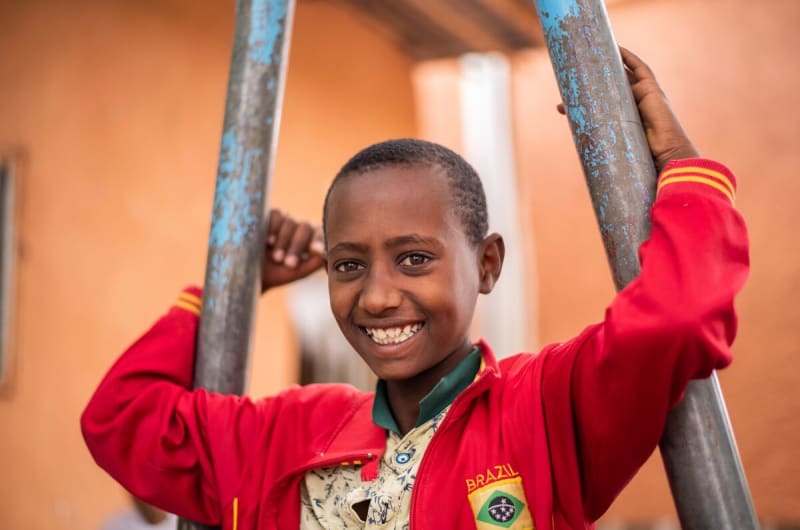In this article:
- What can we learn from Canada’s treatment of First Peoples?
- Inspiring collaboration by local churches and the Shawi people in Peru and the Chachi people in Ecuador
- Ways forward together with our Indigenous neighbours around the world
____
Six-year-old Colin’s bright smile points to a happiness that is also traditionally represented by the colourful dress of his people, the Shawi. Shawi means “peanut” in his native language—a nod to the tribe’s ancestral belief that they come from the raw peanut.
Colin’s community experiences rampant poverty, and his family is no exception. But at the Compassion centre at The Prince of Peace Evangelical Church, a local church in his community, Colin can focus on being a carefree kid, rather than experiencing hunger or neglect. “The days I have to go to the church are my favourite days of the week,” he says.
This local church has become a place where Colin and his friends can run and play with joy and freedom—a freedom that isn’t always felt by all Shawi people.
Despite the beauty and importance of their traditional clothing, many Shawi people feel uncomfortable wearing it because, sadly, they face discrimination from others in Peru when they do.
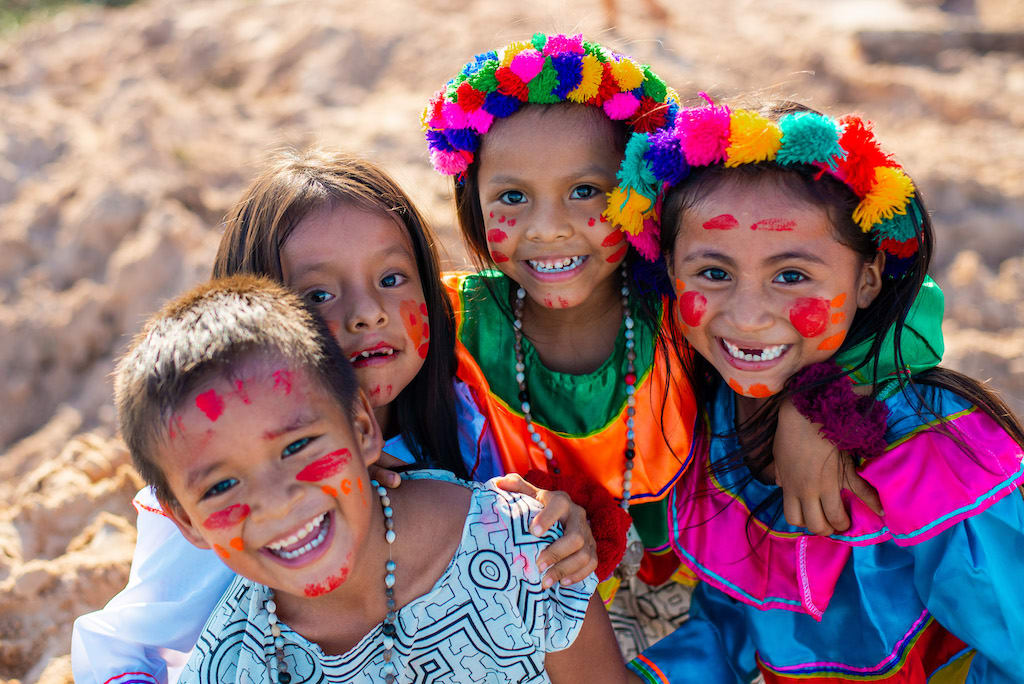
Colin, Luciana, Rosa and Yajaira are from the Shawi ethnic group in northern Peru. Dressed in their tribe’s traditional clothing to symbolize happiness, they are at the Compassion centre at a local church where they are known, loved and protected by local staff who help them grow in all aspects of life.
The discrimination the Shawi people face is sadly reflective of the stories of Indigenous tribes throughout the Americas. Though the stories are varied, the general themes are consistent: The cultures, languages, practices, values and people of Indigenous tribes in the Americas and around the world have been consistently erased and ignored.
And yet in the face of such injustice, there are incredible stories of reconciliation, tenacity and hope that can be told—and more importantly, lived. To mark the International Day of the World’s Indigenous Peoples, we want to take time to look at some of these stories and consider how they intersect with our own lives.
Acknowledging the history of here
I first began to understand the story of my First Nation neighbours here in Canada when I was 19 years old. I couldn’t believe it had taken so long for me to gain exposure to their stories.
As part of a summer internship program, I visited a former residential school in Ontario and heard the stories of children taken from their families by the state, a devastating program administered by, to my horror, Christian churches.
Mennonite Central Committee, an organization that does significant work with Indigenous peoples in Canada, paints the broad picture of these schools:
More than 130 residential schools were located across the country and the last school closed in 1996. These government-funded, church-run schools were set up to eliminate parental involvement in the intellectual, cultural and spiritual development of Aboriginal children. During this era, more than 150,000 First Nations, Métis and Inuit children were placed in these schools. Many were forbidden to speak their language and practice their own culture.
Many of those 150,000 children, now adults, have shared about their experience at residential schools. From their stories emerges a horrible truth: At these schools, Indigenous children were neglected, abused and taught to turn away from their culture, values and language. Much of it was done in the name of making the children more “Christian” and under the horribly mistaken belief that it is not possible to express both your culture and faith. It was an attempt to erase an entire culture.
This story is a painful one—and honestly, it isn’t mine to tell. But as a Christian and a descendant of immigrants to Canada, it is my story to learn.
I understand that it’s difficult and uncomfortable to talk about the horrific things that happened at the hands of Christians, Canadians, teachers, politicians—people who were mostly quite similar to many of us. That discomfort is likely why I didn’t get the opportunity to learn about residential schools until I was 19.
But aren’t the most important things to learn almost always the most uncomfortable? We have to get uncomfortable and learn from the past if in the present we want to be good neighbours to Indigenous people and others in our communities.
What we have to learn
As we work to give people from every nation the opportunity to hear about Jesus, it’s important to understand that the way in which we do so makes all the difference between sparking generations of faith or generations of pain.
Beyond that, our lives will be richer as we also learn about the beautiful histories and cultures of the many Indigenous tribes in our midst. In her contribution to Wrongs to Rights: How Churches can Engage the United Nations Declaration on the Rights of Indigenous Peoples, Cree author and activist Sylvia McAdam writes:
Indigenous peoples have always been here in these lands now known as ‘Canada’. We lived as vibrant, independent and free peoples enjoying structured leadership, centuries-honed legal systems and intimate relationships with all the diverse landscapes and waterscapes that make up Turtle Island. Our Indigenous history did not begin with the arrival of Europeans.
Whether it’s the beauty of Indigenous art or Indigenous peoples’ tenacious commitment to creation care, there is so much to the story of the Indigenous peoples of the Americas. And when invited, those of us who don’t belong to an Indigenous tribe can learn so much by sharing in intercultural experiences with our Indigenous neighbours.
There are inspiring examples of how local churches are collaborating with Indigenous tribes around the world.
Many of Compassion’s local church partners in the Americas work with children and families from Indigenous tribes. They are helping children grow their cultural values, their faith and their aspirations for the future. Together, these churches and Indigenous tribes are learning from each other and serving one another in beautiful, Christ-like ways that reflect the beauty of His kingdom.
The Shawi people in Peru

The Prince of Peace Evangelical Church in northern Peru works hard to serve a large number of children and families of the Shawi ethnic group like Colin and his family. The staff and volunteers at this Compassion centre strive to create an environment where children have the freedom to wear their traditional clothing and experience the joy it represents.
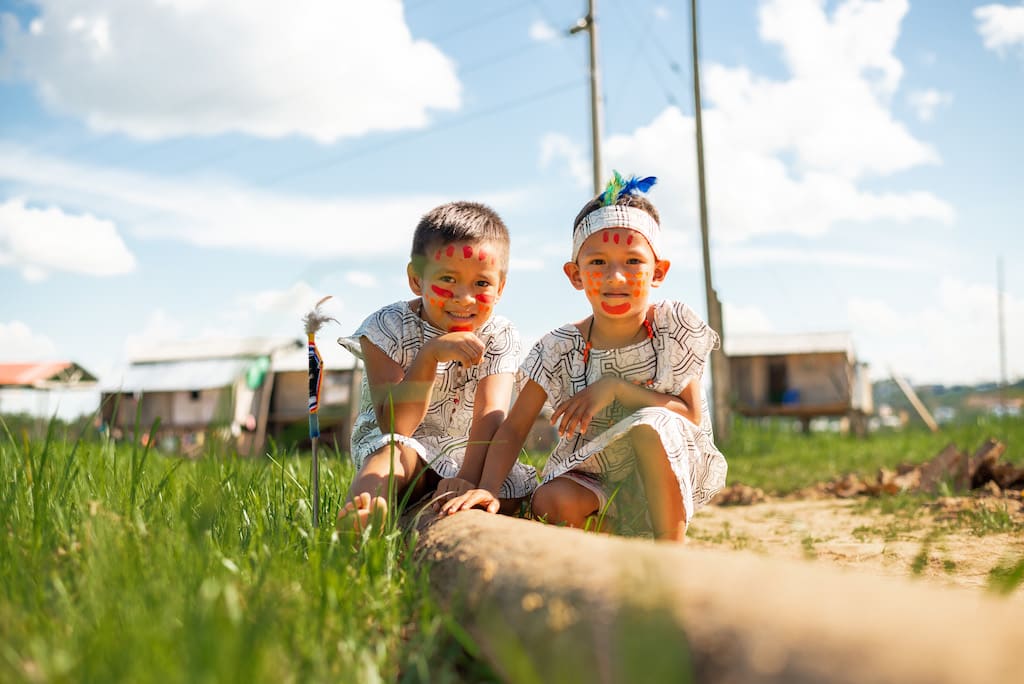
The work isn’t without challenge. The Shawi peoples’ community lacks the infrastructure for running water and sewage. They also have limited access to healthcare centres, meaning many women give birth at home in dangerous conditions. These issues are exactly why the local church is currently serving 243 children in the community. They provide clean water, food support and access to medical care—sharing the love of Christ and confronting poverty head-on in all that they do.
It’s easy to see why Colin’s favourite days are days at the Compassion centre. “All the tutors are always showing us much love,” he says.
The Chachi people in Ecuador
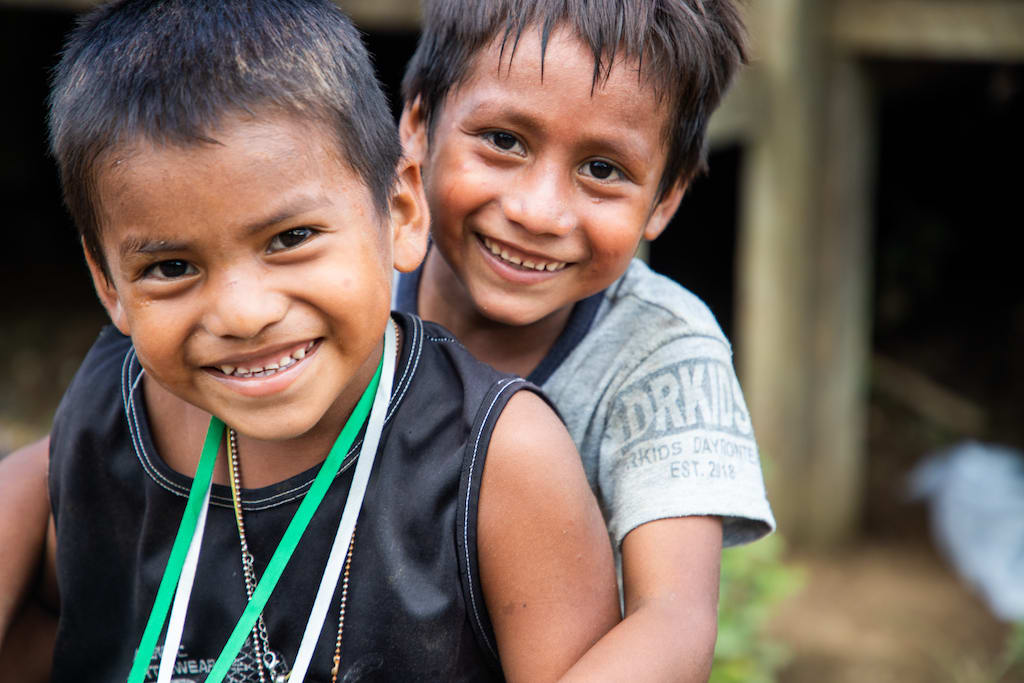
In Ecuador, a local church partner works with Indigenous children from the Chachi ethnic group in the community of Capulí, on the banks of the Onzole river. Sixty per cent of the population in this community are children. Most families are cocoa farmers—a heavily exploitative industry that leaves many small-scale farmers like these Chachi families in poverty. The community also experiences limited access to higher education and clean drinking water.
The local church first partnered with Compassion four years ago to respond to these needs in the community. The centre serves 356 children through Compassion’s child development program. The children now have access to clean water, nutritious food and a safe place to play.
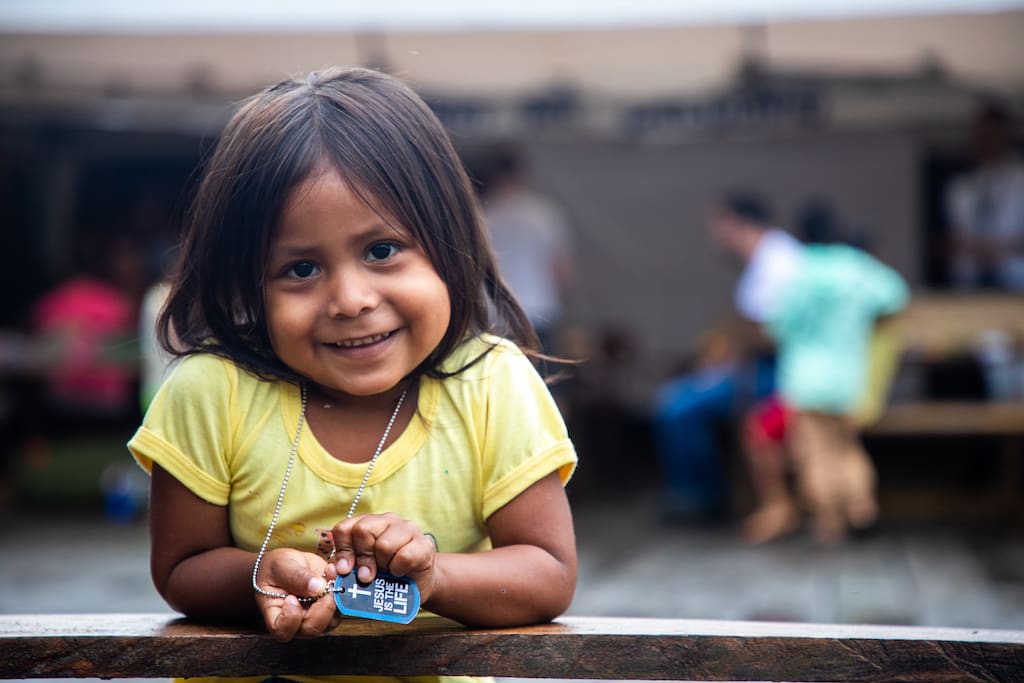
Read more: This local church is helping to preserve the Chachi peoples’ native language and protect their lands from environmental pollution.
Imagining a hopeful way forward
We are thankful to get a glimpse into the lives of Indigenous children in Peru and Ecuador through our local church partners. We are inspired by the work they are doing to share the love of Christ, end poverty in the lives of children and preserve the language and culture of Indigenous tribes.
History is messy and imperfect, the present by no means holds easy answers, and there will likely be more mistakes in the future. But as Christians, we have the best guide to turn to as we try to figure out the hard questions and imagine the best ways forward—Jesus.
Jesus consistently flips our tough questions or messy situations on their heads, giving us simpler answers than we might anticipate.
Too often I ask questions in the tone of the lawyer who asks, “And who is my neighbour?” in Luke 10:25-37—trying to justify myself, deflect responsibility and get out of needing to learn and grow. But as the scene plays out, Jesus simply responds by challenging us to ask who we can be a neighbour to—while gently reminding us of times when perhaps we haven’t been a good neighbour.
When I look to those words of Jesus—and at smiles like the ones of the Shawi and Chachi children—I start to see a hopeful way forward. I see a way forward in which we repent of when we haven’t been good neighbours, and then strive to be better. I start to see how Christians could be known for being the best neighbours, especially to our Indigenous neighbours.
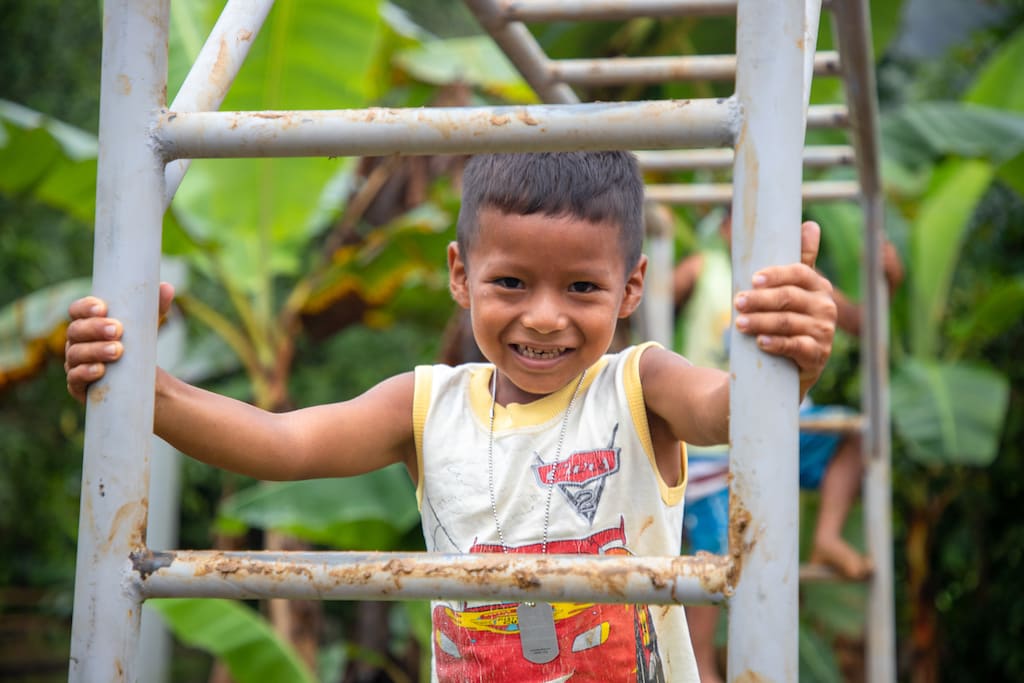
Steve Heinrich, the Director of Indigenous-Settler Relations at the Mennonite Church of Canada, writes, “Be certain—there’s no one right way to do this. Yet there are postures that will give life and allow us to journey in a good way.”
We can learn, even if it makes us uncomfortable.
We can help those around us to learn, too, in simple but profound ways. We can support local churches who are doing the important work of releasing children from poverty in Indigenous communities.
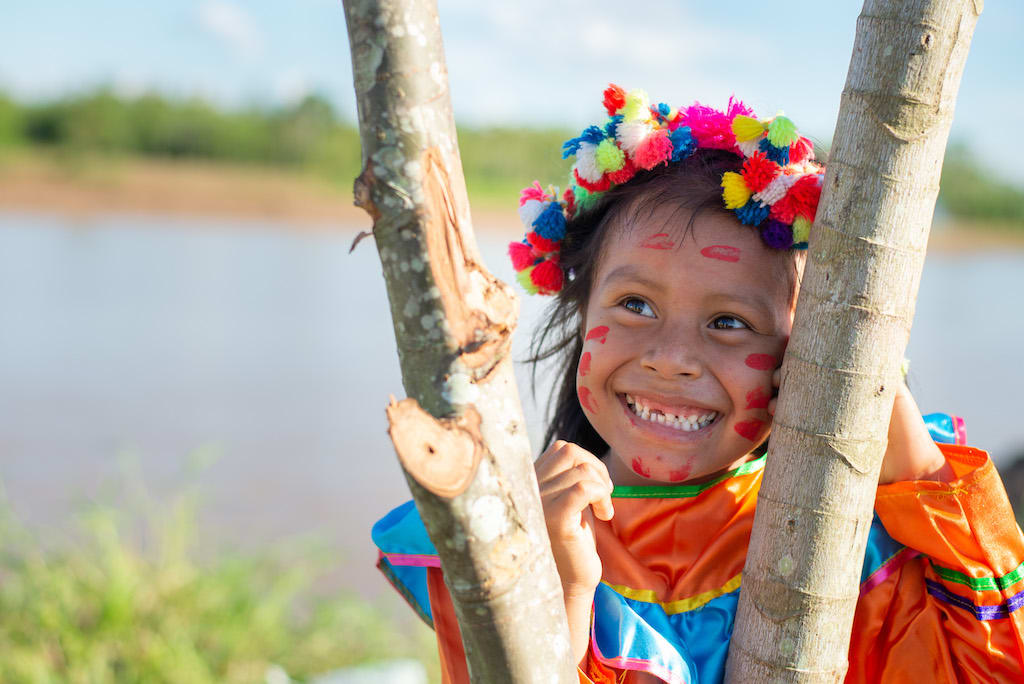
I’d like to leave you with the words of Dr. Cheryl Bear of the Nadleh Whut’en First Nation, Indigenous Relations Specialist at Canadian Baptist Ministries. In a beautiful essay about her grandfather, she closes with this compelling and hopeful call to action:
What gives me hope is to see change happening in my lifetime. Today no one would tolerate a sign saying, “No Indians Allowed” on a public building. But sometimes these signs still exist in the hearts of Canadians. We have work to do to raise awareness of Indigenous worldview, culture and values because reconciliation starts in learning of the people whose land we are on.
… My Grandpa had a strong faith. I know he prayed for me and our beautiful [nation]. I believe that we are living in the days of answered prayers of our ancestors and that gives me great hope.
____
Want to reflect more on what it looks like to be a good neighbour?
Check out our book and film series called Eyes to See: Reflecting God’s Love to a World in Need. Individuals or small groups are invited to consider how we see God, ourselves, others and the world around us—and how that impacts how we live and love in this broken world.
Yes, I’d like a free download of Eyes to See!
P.S. Dr. Cheryl Bear, whose words conclude this article, was a contributor to the Eyes to See films!
Photos and field reporting by Jonatan Ruiz (Peru) and Nico Benalcazar (Ecuador)



